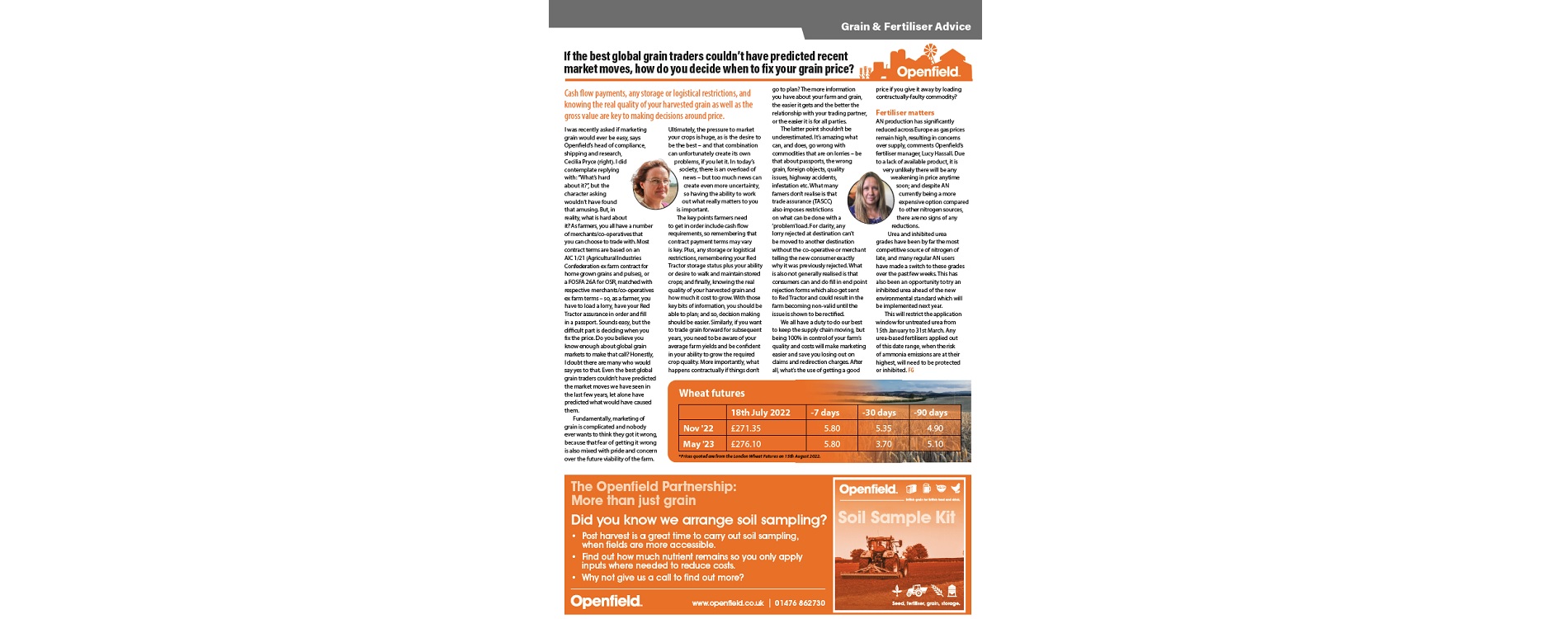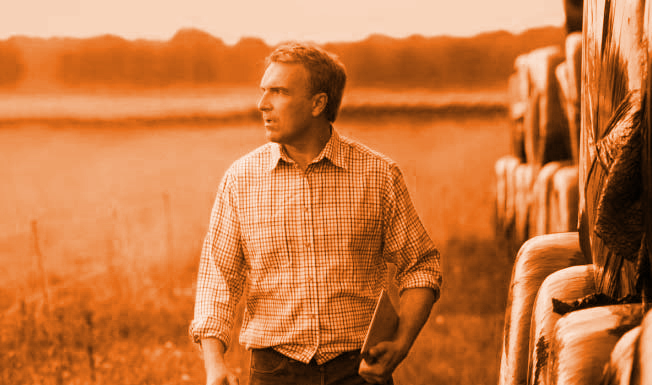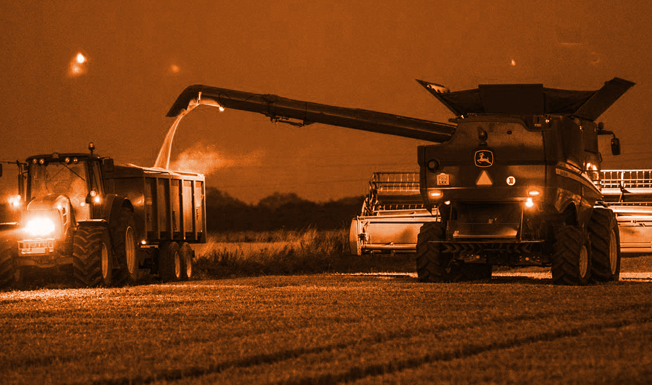If the best global grain traders couldn’t have predicted recent market moves, how do you decide when to fix your grain price?
Cash flow payments, any storage or logistical restrictions, and knowing the real quality of your harvested grain as well as the gross value are key to making decisions around price.
I was recently asked if marketing grain would ever be easy, says Openfield’s head of compliance, shipping and research, Cecilia Pryce. I did contemplate replying with: “What’s hard about it?”, but the character asking wouldn’t have found
that amusing. But, in reality, what is hard about it? As farmers, you all have a number of merchants/co-operatives that you can choose to trade with. Most contract terms are based on an AIC 1/21 (Agricultural Industries Confederation ex farm contract for home grown grains and pulses), or a FOSFA 26A for OSR, matched with respective merchants/co-operatives ex farm terms – so, as a farmer, you have to load a lorry, have your Red Tractor assurance in order and fill in a passport. Sounds easy, but the difficult part is deciding when you fix the price. Do you believe you know enough about global grain markets to make that call? Honestly, I doubt there are many who would say yes to that. Even the best global grain traders couldn’t have predicted the market moves we have seen in the last few years, let alone have predicted what would have caused them.
Fundamentally, marketing of grain is complicated and nobody ever wants to think they got it wrong, because that fear of getting it wrong is also mixed with pride and concern over the future viability of the farm. Ultimately, the pressure to market your crops is huge, as is the desire to be the best – and that combination can unfortunately create its own problems, if you let it. In today’s society, there is an overload of news – but too much news can create even more uncertainty, so having the ability to work out what really matters to you is important.
The key points farmers need to get in order include cash flow requirements, so remembering that contract payment terms may vary is key. Plus, any storage or logistical restrictions, remembering your Red Tractor storage status plus your ability or desire to walk and maintain stored crops; and finally, knowing the real quality of your harvested grain and how much it cost to grow. With those key bits of information, you should be able to plan; and so, decision making should be easier. Similarly, if you want to trade grain forward for subsequent years, you need to be aware of your average farm yields and be confident in your ability to grow the required crop quality. More importantly, what happens contractually if things don’t go to plan? The more information you have about your farm and grain, the easier it gets and the better the relationship with your trading partner, or the easier it is for all parties.
The latter point shouldn’t be underestimated. It’s amazing what can, and does, go wrong with commodities that are on lorries – be that about passports, the wrong grain, foreign objects, quality issues, highway accidents, infestation etc. What many famers don’t realise is that trade assurance (TASCC) also imposes restrictions on what can be done with a ‘problem’ load. For clarity, any lorry rejected at destination can’t be moved to another destination without the co-operative or merchant telling the new consumer exactly why it was previously rejected. What is also not generally realised is that consumers can and do fill in end point rejection forms which also get sent to Red Tractor and could result in the farm becoming non-valid until the issue is shown to be rectified.
We all have a duty to do our best to keep the supply chain moving, but being 100% in control of your farm’s quality and costs will make marketing easier and save you losing out on claims and redirection charges. After all, what’s the use of getting a good price if you give it away by loading contractually-faulty commodity?
Fertiliser matters
AN production has significantly reduced across Europe as gas prices remain high, resulting in concerns over supply, comments Openfield’s fertiliser manager, Lucy Hassall. Due to a lack of available product, it is very unlikely there will be any weakening in price anytime soon; and despite AN currently being a more expensive option compared to other nitrogen sources, there are no signs of any reductions.
Urea and inhibited urea grades have been by far the most competitive source of nitrogen of late, and many regular AN users have made a switch to these grades over the past few weeks. This has also been an opportunity to try an inhibited urea ahead of the new environmental standard which will be implemented next year.
This will restrict the application window for untreated urea from 15th January to 31st March. Any urea-based fertilisers applied out of this date range, when the risk of ammonia emissions are at their highest, will need to be protected or inhibited.




